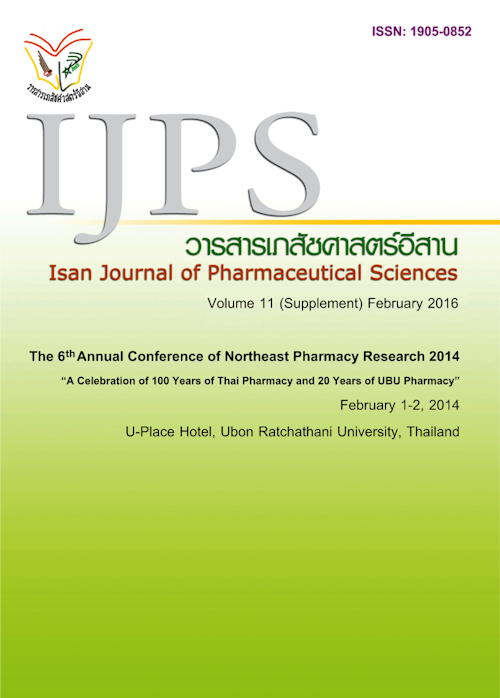Development and Evaluation of Electronic-learning Media on Drug Information Resources Commonly Used in Clinical Pharmacy in Pharmacy Students
Main Article Content
Abstract
Introduction: Electronic-learning (E-learning) media is an approach which can be adjusted in accordance with the speed in recognition of students to enhance individual learning. E-learning is also useful for a style of emphasizing and repetitive learning to meet the needs of students. In addition, E-learning can be used in situations with a limited number of instructors and/or a large number of students. In learning process, pharmacy students need to know drug information resources. Because of a variety of the resources, a limited time and large amount of pharmacy students in classes, it is unfeasible for the students to learn these resources effectively and completely. Therefore, the researchers were interested in development of electronic-learning media on drug information resources commonly used in clinical pharmacy and aimed to evaluate the efficiency of the media when used in pharmacy students. Materials and Method: This is a research and development study which was carried out during June 3rd – September 30th, 2013 at Faculty of Pharmaceutical Sciences, Khon Kaen University. The E-learning media was developed by using the Adobe Captivate Program. The media consisted of the details, prominent points, and methods to use of 12 books and 1 database that are frequently used in clinical pharmacy. The trial use of the media was conducted in 8 of the fifth-year pharmacy students. The media was then adjusted for appropriateness. Next, the E-learning media was tested in the fourth –year pharmacy students (N= 43). Efficiency of the media was evaluated by comparing students’ scores before and after learning via the E-learning media. The data were analyzed using Paired t-test in the IBM SPSS Version 19. Results: By comparing the average of students’ score before and after learning via the E-learning media, we found that 1) the media was found to be efficient in improvement of students’ overall knowledge on drug information resources (p <0.001), 2) student knowledge on selection of appropriate resources based on the need of information was improved (p <0.05), 3) student knowledge on the prominent point of resources was improved (p <0.001), and 4) time that the students spent in learning via the media was 66.91 minutes in average. Conclusion: we found that the students’ test scores significantly improved after learning through the E-learning media, indicating that the media is efficient to allow students to recognize the characteristics and the prominent points of the drug information resources, and to select the appropriate resources in regard to information they need. In addition, the students can spend different time in learning based on their capability.
Article Details
In the case that some parts are used by others The author must Confirm that obtaining permission to use some of the original authors. And must attach evidence That the permission has been included


